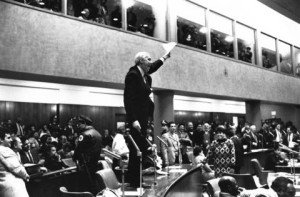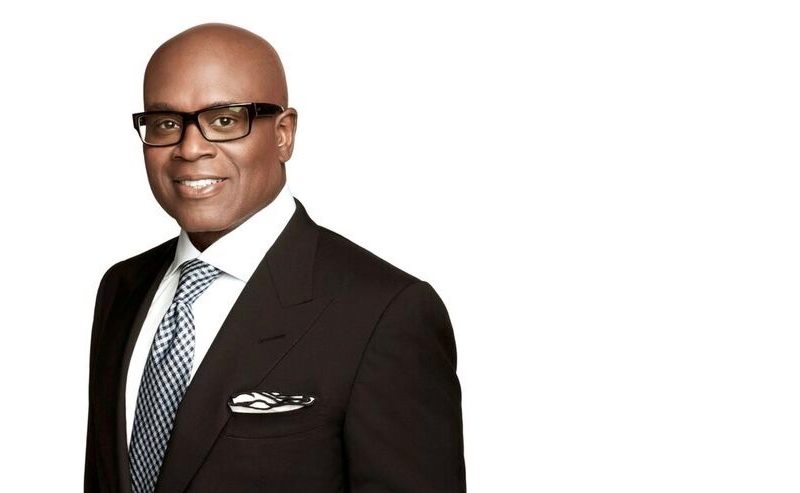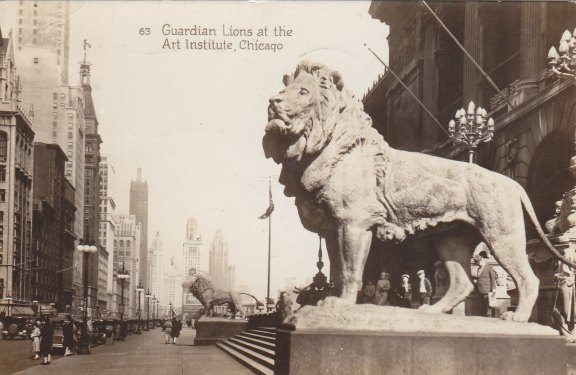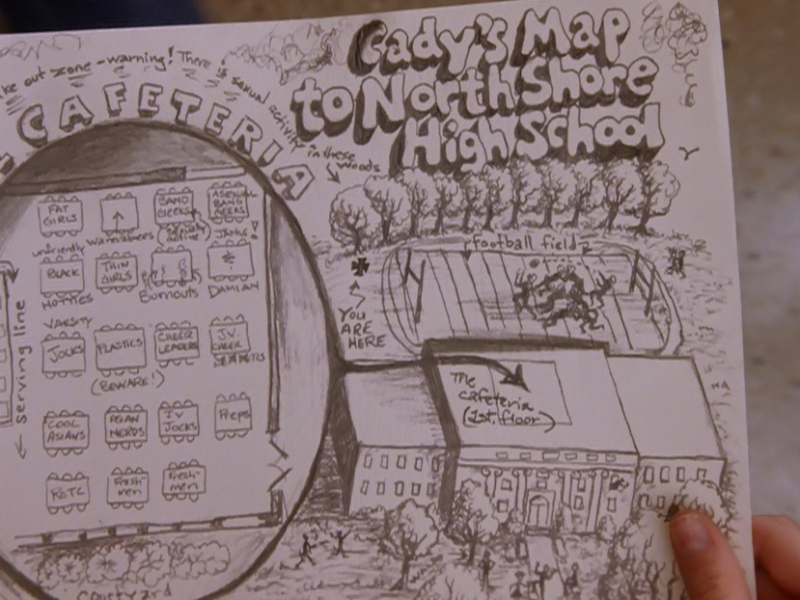
Tuesday Trivia: Civics Lesson!
Welcome to Tuesday Trivia! Each week, we tackle this big, bizarre, wonderful city through a different lens, asking you to answer the tough questions. This week we’re taking your right back to civics class with a quiz about Chicago politics!

A view from the Council Wars. For more on this moment in Chicago civic history, check out question #7. Photo credit: Chuck Berman
1. Mike Royko once suggested that the city ought to change its motto from Urbs in Horto (City in a Garden) to what new motto, reflecting its political climate?
a. Life, liberty and clout
b. My uncle is an alderman
c. Where’s mine?
d. To hell with due process
Answer: C. Royko wrote that the city should change its motto to Ubi Est Mea, translating to “Where’s Mine?” as a way of critiquing the selfishness of local politics. He wrote, “It is the watchword of the new Chicago, the cry of the money brigade, the chant of the city of the big wallet.”
2. Who was Chicago’s first mayor?
a. Thomas Dyer
b. Francis Cornwall Sherman
c. William Butler Ogden
d. Daley
Answer: C. William Butler Ogden served as mayor of Chicago from 1837 to 1838. You might think fondly of him as you cruise up and down Ogden Avenue. Also, there is an Ogden Avenue in the Bronx named for him as well. We happen to prefer our Ogden Avenue, though, thank you very much.
3. Who was blamed for the public transit delays and issues with trash collection following the massive 1979 blizzard?
a. Jane Byrne
b. Richard J. Daley
c. Michael Bilandic
d. James R. Thompson
Answer: C. Mayor Michael Bilandic took office after the death of Richard J. Daley and was widely blamed for the aftermath of the blizzard. In fact, citywide disappointment with Bilandic helped get Jane Byrne elected mayor several months later.
4. How many wards comprise Chicago?
a. 45
b. 50
c. 55
d. 60
Answer: B. There are 50 wards in the city of Chicago. The 1st ward covers parts of Bucktown and Logan Square, the 50th covers Rogers Park–and you should begin to notice that they are organized numerically according to no discernable system. The 26th ward is adjacent to the 1st, 35th and 27th wards.
5. What did Mayor Jane Byrne do to bring attention to the violence in the Cabrini-Green Homes housing project in 1981?
a. She moved in.
b. She moved her office to Cabrini-Green
c. She had foreign diplomats stay at Cabrini-Green when they visited Chicago
d. She closed down Cabrini-Green
Answer: A. Jane Byrne, Chicago’s only female mayor, moved into an apartment in the Cabrini-Green Homes for three weeks in 1981. While the effort was well-intentioned, many viewed it as a publicity stunt and were skeptical of its efficacy.
6. When was Harold Washington, Chicago’s first black mayor, elected to office?
a. 1977
b. 1980
c. 1983
d. 1985
Answer: C. Harold Washington was elected in 1983 and served as mayor until his death in office in 1987. To learn more about Harold Washington and his legacy, check out this This American Life story. Heck, this one too.
7. What does the term “Council Wars” refer to?
a. Mayor Richard J. Daley’s control of city council
b. Distrust of Mayor Jane Byrne
c. Contentious attempts to rezone wards in the city
d. Racial gridlock and rancor in city council
Answer: D. The Council Wars were a time of racialized political gridlock in city council under Mayor Harold Washington. There was an all-white majority group in city council that attempted to block most of Washington’s appointments and actions. The wars ended when zones were remapped and wards shifted demographics.
8. How many mayors died in office?
a. 0
b. 2
c. 4
d. 6
Answer: C. Carter Harrison, Sr., Anton Cermak, Richard J. Daley and Harold Washington all died in office. Cermak and Harrison were assassinated in office. In fact, Harrison’s assassination is the subject of a plotline in Devil in the White City. Cermak was assassinated while shaking hands with Franklin D. Roosevelt. The gunman’s motives remain unclear.
9. During the 1968 Democratic National Convention held in Chicago, the Yippies nominated an unusual candidate for the presidential nomination, indicating their displeasure with the political status quo. What did they nominate?
a. A pig
b. A rat
c. A rainbow
d. A dog
Answer: A. The Yippies held their own political convention, nominating a pig named Pigasus for president. After Pigasus was paraded through the Civic Center, policemen arrested folk singer Phil Ochs, Yippie leader Jerry Rubin and Pigasus, among others. We’re not sure if they handcuffed or hoofcuffed the porcine delinquent.
Stay tuned for next week’s trivia featuring Chicago’s artistic side!




